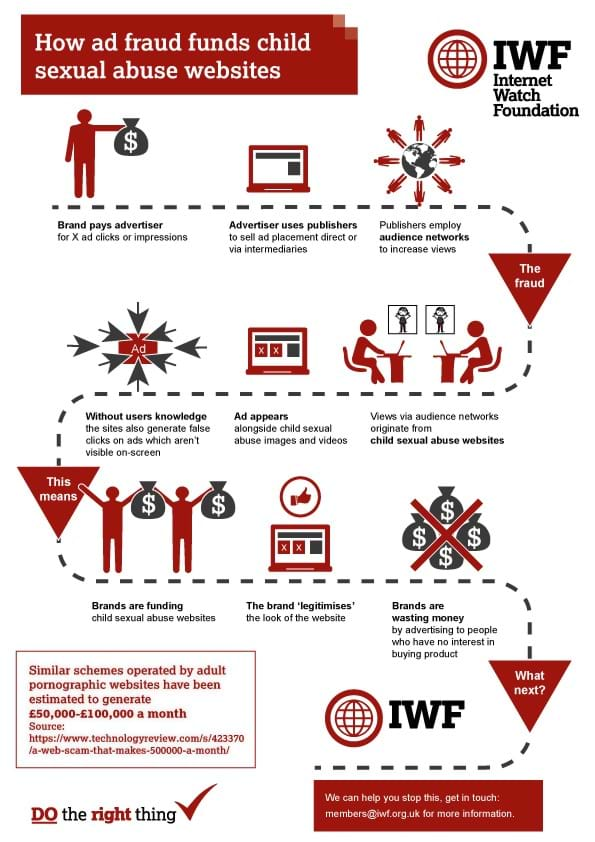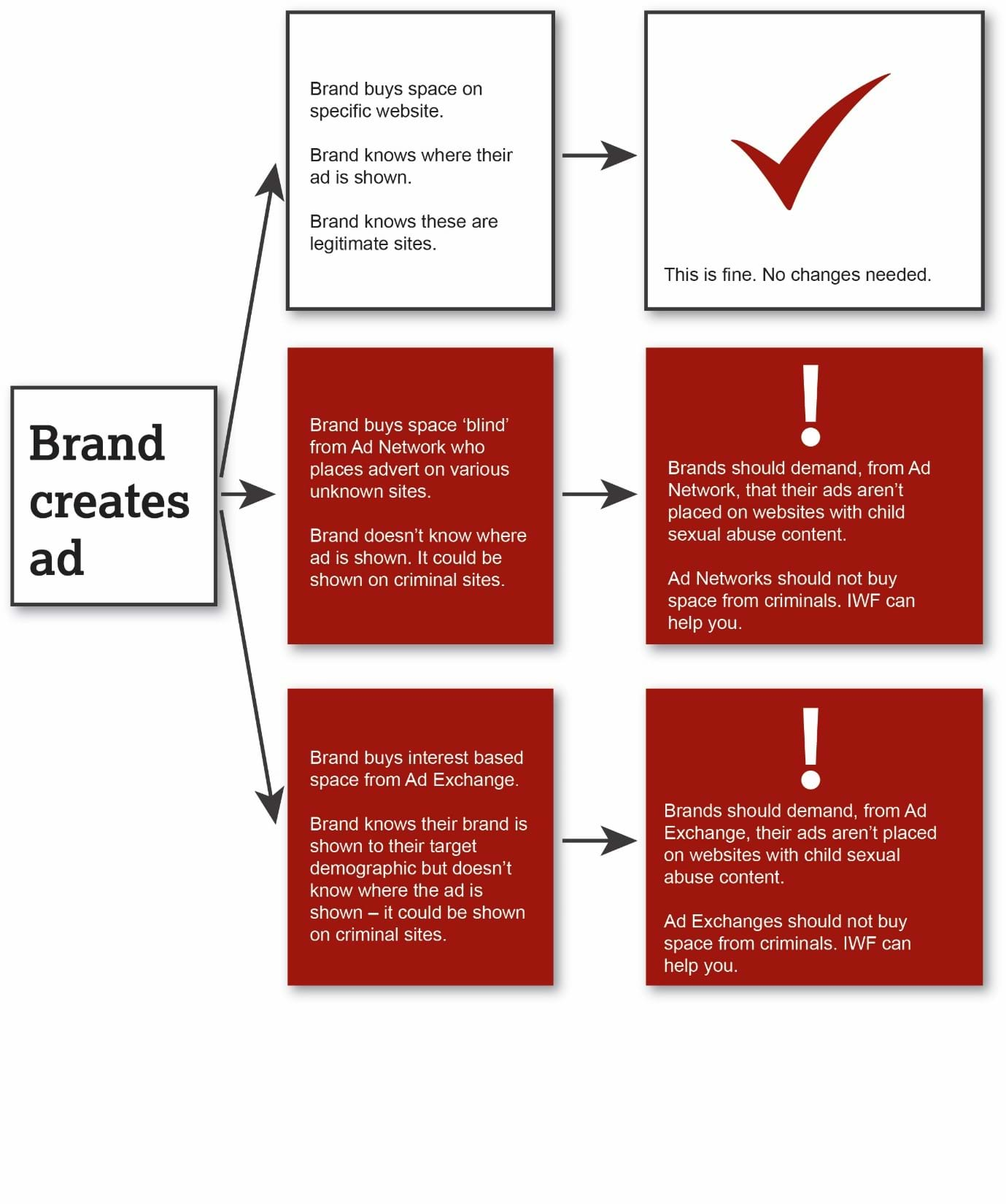
Why We Need to Speak with One Voice on Children’s Online Safety
Parents across the world are calling for clearer, stronger action to keep children safe online.

Published: Fri 24 Nov 2017
Who would have thought legitimate brands and household names are advertised on websites alongside horrendous images and videos of child sexual abuse? Sadly, that’s the reality our analysts see on a daily basis - and this could be your brand.
At the Internet Watch Foundation (IWF), we work globally to identify and help remove online child sexual abuse imagery. Last year alone we found 57,335 webpages with one or more images or videos of child sexual abuse.
Behind each of the images we assess as child sexual abuse is a real child victim. We know that every single time an image or video of a victim is viewed, this child suffers victimisation. We’re here to stop that. For good.
Today, many of the webpages our analysts assess profit from the sale of advertising space. That’s why our analysts see recognised, trusted brands appear on screen alongside images of child sexual abuse on a daily basis. On these sites, brands often appear as ‘pop-unders’, a variation of the pop-up window, which opens a new browser window hidden under the active window. This is because they’re using marketing affiliate schemes such as ad networks and ad exchanges. So, indirectly they’re funding the viewing and sharing of child sexual abuse imagery.
We understand how important it is to advertise and promote your brand. But protecting it is vital. We also know how difficult it can be when you’re using a third party service and may not have as much control as you’d like. This is where we can help.
At IWF, our mission is to eliminate child sexual abuse imagery from the internet. We achieve this by removing these hideous images and disrupting their continued distribution. One way we can do this is by working with partners to remove criminals’ income streams such as those derived from selling their advertising space.
We have over 20 years of experience of doing this vital work with companies across the global internet industry. We’re making an impact across search, social media, domains and payments sectors. And we want to help you address the missing link, of affiliate marketing, where we’re seeing your brands appearing alongside images of child sexual abuse every day.
So how does a reputable brand, with marketing expertise and experience, end up advertising alongside images and videos of children being sexually abused? Well, in our experience, the reputable brand is completely unaware of the illegal images that they’re sharing an advertising platform with. See the infographic below for a simple guide on how this happens.


We recommend that anyone using online advertising, finds out exactly where their adverts are being shown. Check whether your advertising network, or exchange, is a Member of IWF and uses our services that help avoid advertising on criminal websites.
Our role is to help legitimate companies protect their brands. But brands need to take a stance against child sexual abuse imagery. They need to let Ad Networks and Exchanges know that they have a zero tolerance to this type of hideous material. They need to demand that they only buy space when they’re confident that the company they are dealing with doesn’t buy space on criminal websites, including those with child sexual abuse images and videos.
We can also help Ad Networks and Exchanges, by offering services that will help them avoid buying space on the websites with this illegal content.
So do the right thing…
Get in touch with [email protected] to find out how we can help you.
No one wants to support online commercial child sexual abuse imagery. So let us help you.
By working together, we can help protect legitimate brands and disrupt the major revenue streams to commercial distributors of child sexual abuse images and videos. These are the people profiting from the sexual abuse of children. It’s our goal to eliminating child sexual abuse images from the internet. Help us in our mission.
Web: www.iwf.org.uk
Twitter: @IWFhotline
Facebook: Internet Watch Foundation
YouTube: iwfhotline
Linkedin: /company/iwf

Parents across the world are calling for clearer, stronger action to keep children safe online.

The debate on the EU’s proposed Child Sexual Abuse Regulation (CSAR) has been dominated by one loud slogan. A slogan which may have dire consequences for the safety and wellbeing of millions of children worldwide.

Three years ago, when Pinsent Masons set out to unite their communities to raise money for the Internet Watch Foundation (IWF), no one could have predicted how far their idea would go or how many people would still be moving for the cause three years later.